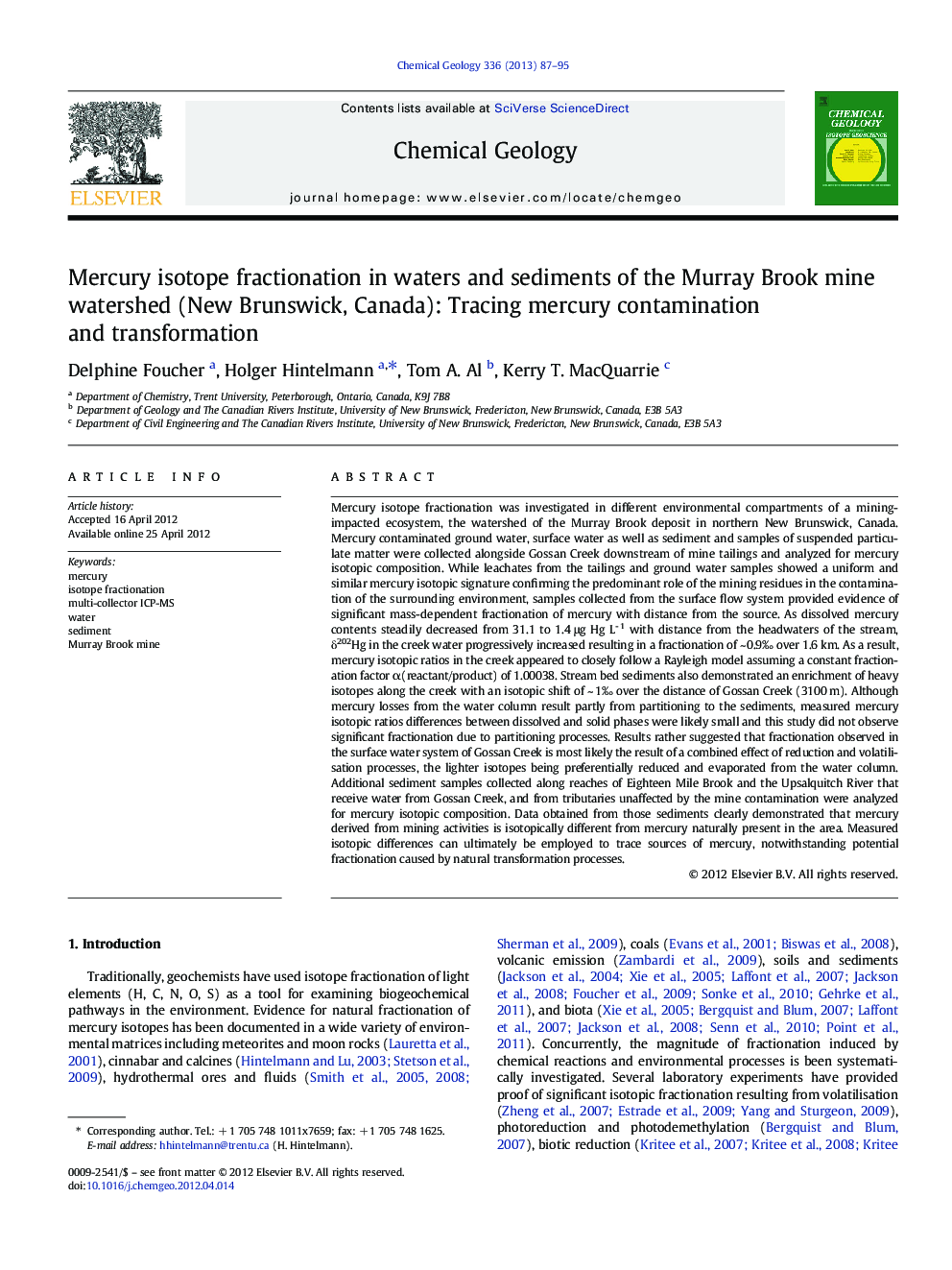| کد مقاله | کد نشریه | سال انتشار | مقاله انگلیسی | نسخه تمام متن |
|---|---|---|---|---|
| 4699160 | 1637631 | 2013 | 9 صفحه PDF | دانلود رایگان |
Mercury isotope fractionation was investigated in different environmental compartments of a mining-impacted ecosystem, the watershed of the Murray Brook deposit in northern New Brunswick, Canada. Mercury contaminated ground water, surface water as well as sediment and samples of suspended particulate matter were collected alongside Gossan Creek downstream of mine tailings and analyzed for mercury isotopic composition. While leachates from the tailings and ground water samples showed a uniform and similar mercury isotopic signature confirming the predominant role of the mining residues in the contamination of the surrounding environment, samples collected from the surface flow system provided evidence of significant mass-dependent fractionation of mercury with distance from the source. As dissolved mercury contents steadily decreased from 31.1 to 1.4 μg Hg L- 1 with distance from the headwaters of the stream, δ202Hg in the creek water progressively increased resulting in a fractionation of ~ 0.9‰ over 1.6 km. As a result, mercury isotopic ratios in the creek appeared to closely follow a Rayleigh model assuming a constant fractionation factor α(reactant/product) of 1.00038. Stream bed sediments also demonstrated an enrichment of heavy isotopes along the creek with an isotopic shift of ~ 1‰ over the distance of Gossan Creek (3100 m). Although mercury losses from the water column result partly from partitioning to the sediments, measured mercury isotopic ratios differences between dissolved and solid phases were likely small and this study did not observe significant fractionation due to partitioning processes. Results rather suggested that fractionation observed in the surface water system of Gossan Creek is most likely the result of a combined effect of reduction and volatilisation processes, the lighter isotopes being preferentially reduced and evaporated from the water column. Additional sediment samples collected along reaches of Eighteen Mile Brook and the Upsalquitch River that receive water from Gossan Creek, and from tributaries unaffected by the mine contamination were analyzed for mercury isotopic composition. Data obtained from those sediments clearly demonstrated that mercury derived from mining activities is isotopically different from mercury naturally present in the area. Measured isotopic differences can ultimately be employed to trace sources of mercury, notwithstanding potential fractionation caused by natural transformation processes.
► isotope ratio measurements distinguish geogenic mercury from mercury contamination
► isotope signatures allow tracking of a mercury contamination from mining activities
► concurrent natural processes further fractionate mercury isotopes
► over 90% of downstream mercury is attributed to mining activities
Journal: Chemical Geology - Volume 336, 16 January 2013, Pages 87–95
